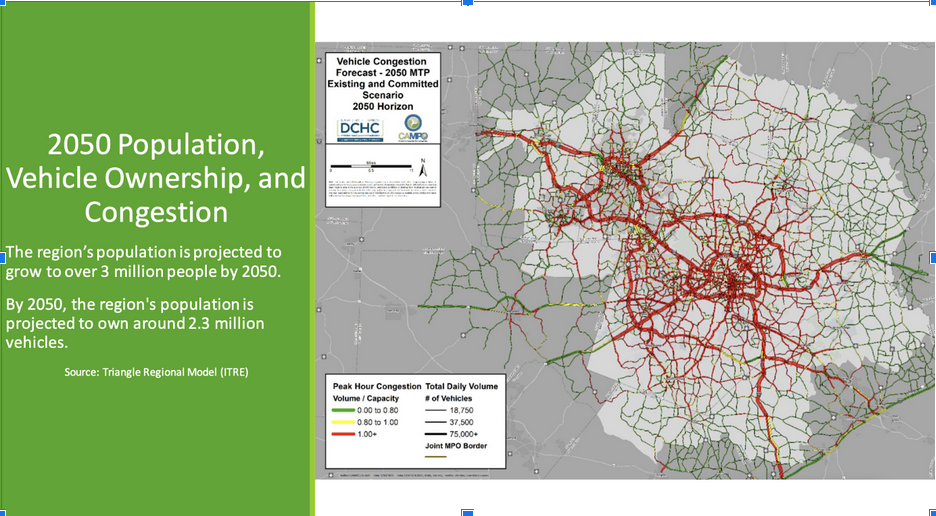On Tuesday, GoTriangle, our regional transit agency, gave a presentation to the Durham County Commissioners on its latest feasibility study for commuter rail in the Triangle. The study, which cost $9 million, was intended to build support for building a commuter rail line through the heart of the Research Triangle, beginning in West Durham and running through Morrisville, Cary, Raleigh, and Garner before it terminates in Clayton.
Two years ago, the commuter rail was expected to cost $1.4 – 1.8 billion. Now, the price tag has doubled, to $2.8 billion-$3.2 billion, or more than $74 million for each of its 43 miles.

Now, we love trains. We love riding them, reading stories about them, singing about them, even reading minutiae about headways and engine types. There’s nothing more we would like to see than commuter rail service in the Triangle.
But this proposal, to spend $3.2 billion for a service that will draw 12,000 riders a day is a fantasy. Before the pandemic, the Virginia Railway Express, which links towns in Northern Virginia to Washington, had 18,000 riders a day. And that’s for a service that connects to a major city with its own extensive subway system. Now, ridership on the VRE is below 5,000 per day.
In GoTriangle’s defense, we badly need an alternative to driving in the Triangle. The region’s population is expected to grow by one million people in the next thirty years, creating congestion across the entire region.

But a $3.2 billion commuter rail isn’t the answer. If we want to include commuter rail as part of our transportation strategy, we need to find a way to drive down costs. The U.S. is a global outlier on construction costs for transportation, including highways and rail. While the reasons for this are complex, one simple one is that we haven’t been able to gather the will to make the regulatory and administrative changes necessary to make it easier to build. While we doubt those changes are coming anytime soon, it doesn’t make sense for us to spend another two years, or five, or ten, talking about building something that we can’t pay for.
This doesn’t mean that we need to just give up and accept traffic jams forever. Other proposals, like the Triangle Bikeway, would connect our region at a lower cost, and electric bikes make biking ten miles or more palatable. The first Bus Rapid Transit line in Raleigh was just funded, and there are several more in the works, including one in Chapel Hill. The longstanding Bus On Shoulder System program, allows our bus system to offer reliable travel speeds, and we could provide funding for more frequent service, including service that runs late at night and early in the morning. We could add trains to our existing Amtrak service, giving people more options to get across our state.
And, of course, we can build more housing near the places where people work. The new HUB development will offer the first apartments in Research Triangle Park, and, of course, Raleigh and Durham are already adding scads of housing downtown.
While stories about the commuter rail might draw a lot of interest, our transit agencies shouldn’t waste resources on promoting projects that are unlikely to happen. It was worth spending $9 million to study the possibility of commuter rail. But the price tag at this point is too high, and our elected officials should work on finding practical solutions to our transportation challenges.